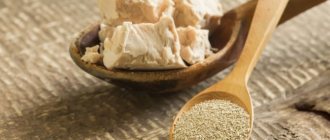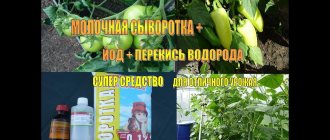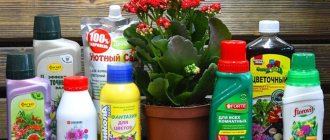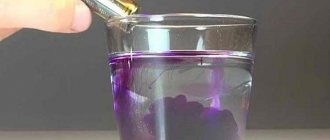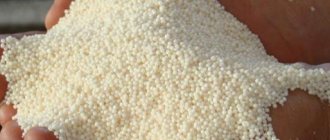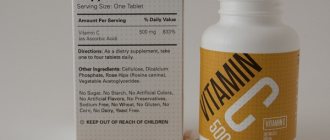What do you feed with yeast? Almost all garden, vegetable and flower crops. After all, the mass intended for baking contains a large range of useful substances, minerals and vitamins.
Any plants need fertilizing with mineral or organic fertilizers. One of the most useful and nutritious supplements is yeast, rich in Saccharomyces fungi. This “live” fertilizer is absolutely safe for humans and plants and helps to obtain a rich and healthy harvest.
What are the benefits of yeast
The fungi that make up yeast accelerate the decomposition of organic compounds, have a beneficial effect on soil microflora and protect plants from diseases and pests. Yeast contains proteins, carbohydrates, trace elements, minerals and B vitamins necessary for plant growth and development. This increases the seedlings’ chances of survival even in low light conditions. When dissolved in water, yeast forms compounds that accelerate the formation of the root system, and also transfers to the plant the vitamins necessary for its development and recovery.
Beginner gardeners often wonder whether it is possible to feed garden crops with yeast? Yes, they can be used to feed almost all plants:
- indoor and garden flowers,
- garden and vegetable crops,
- ornamental and berry bushes, etc.
The only exceptions are potatoes, garlic and onions.
Yeasts are resilient organisms and, unlike other fertilizers, they are not immediately washed away during precipitation. Fungi also easily tolerate high and low temperatures, pressing and crushing. The only serious enemy of these microorganisms is aggressive bacteria, which can suppress their development.
Beneficial properties of yeast nutrition
We will not pay special attention to the benefits of baked goods made with yeast dough. Although in practice, summer residents also use them as a basis for creating fertilizer. Yeast is the ingredient that has been popular among gardeners, summer residents and vegetable gardeners for the last decade.
Feeding plants on a plot of land with yeast means saturating the crop and soil with useful substances. With their help, the activity of microorganisms present in the soil is activated.
In addition, the processes of decomposition of organic matter that was added before or provided as an ingredient in the recipe are accelerated. Active release of nitrogen and phosphorus occurs. These elements help stimulate root development, increase green mass, and improve fruit quality.
Since for a plant a large role in development is assigned to the root system, nutrients must also flow through it. How healthy the root is, the faster the culture grows and develops. Yeast is ideal for stimulating growth and rooting.
Plus, the fungal product contains:
- B vitamins and amino acids;
- hormones that stimulate cell division and growth;
- potassium, phosphorus, magnesium and iron;
- proteins and is more than 55% protein.
The most effective for preparing fertilizer mixtures are live yeast. But dry and pressed ones are also suitable.
How to feed seedlings with yeast
Feeding seedlings with yeast has a beneficial effect on the development of plants, accelerating their growing season and improving the development of the root system.
You can feed seedlings with yeast using one of the following recipes:
- Dilute 200 g of baker's yeast in 1 liter of warm water and let it brew for several hours. Then dilute the resulting composition with 10 liters of water and water the seedlings evenly;
- Take a 100 gram briquette of fresh yeast and dilute it in 10 liters of warm water. Let it sit for a day and then water the seedlings. This “live” composition works especially well on pepper seedlings;
- Dilute 10 g of granulated yeast in 10 liters of warm water and add 2 tbsp. Sahara. Let it brew for 2-3 hours, then dilute the composition with water in a ratio of 1:5.
What plants can be fed with yeast?
As mentioned earlier, yeast is suitable as a fertilizer not only for house plants, but also for the garden.
Yeast as fertilizer for indoor flowers
Before fertilizing indoor plants, let’s figure out why fertilizing with yeast is useful for flowers:
- It is able to stimulate the active growth of flowers, as well as provoke the development of the “correct” bacteria that are present in the soil.
- Fertilizing flowers with yeast has a beneficial effect on the development of their roots, which can increase several times in a short time. It is no secret that the active development of the root system helps the equally rapid development of the green part of the flower.
- Houseplants become stronger, more resilient and hardy.
- Fertilizing allows you to accelerate the development of seedlings and facilitate their transplantation to a permanent place of growth.
- The solution can be used for foliar fertilizing, which is no less effective than root fertilizing.
Before fertilizing home flowers with yeast, it is very important to properly prepare the working solution so that fertilizing will benefit the plant.
Many indoor plants can be watered with this fertilizer. In particular, it is worth feeding geranium and pelargonium. Fed flowers will definitely reward the grower with a beautiful appearance, as well as rapid development.
Tomatoes
Yeast fertilizer for tomatoes is no less effective. This solution can significantly improve the general condition of the vegetable crop, as well as increase its yield.
Fertilizer should be applied comprehensively. This means that you need to water tomatoes not only when they are already growing in a permanent place, but also the seedlings themselves. After just a few days, you will notice that the green part of this plant crop has grown significantly, becoming more fleshy and juicy.
You can fertilize tomatoes with yeast no more than twice. This product is characterized by fermentation, during which it absorbs a large amount of potassium.
Some gardeners recommend using a slightly modified fertilizer recipe for tomatoes, thanks to which it will be possible to compensate for the loss of potassium in the soil. To do this you will need the following components:
- dry yeast – 20 grams;
- poultry manure extract (chicken) – 1 liter;
- wood ash – 1 liter;
- sugar – 10 tablespoons
- water (necessarily warm) - 20 liters.
cucumbers
Of course, feeding with yeast is suitable not only for tomatoes, but also for cucumbers, because they also need many nutrients.
Feeding cucumbers with yeast is carried out in three stages:
- as soon as the first leaf is formed on the seedlings;
- after planting the plant in open ground (only after fertilizing the soil with phosphorus and nitrogen);
- during the fruiting process.
For this garden crop, yeast is an ideal fertilizer, which will certainly increase the yield of the garden plant many times over. The amount of fertilizer can be increased to five waterings, but be sure to adhere to a time interval of 14 days between fertilizing. The recipe for preparing fertilizer for such a popular vegetable crop is the same as for tomatoes.
Strawberry
Fertilizing strawberries with yeast is recommended several times a season. In this case, there is no need to apply a large amount of fertilizer. You should focus on a consumption of 5 liters of fertilizer per 10 strawberry bushes. You can use the following recipe for preparing yeast plant food:
- Mash 1 kg of raw yeast with your hands or a fork and transfer to a bucket or other convenient container.
- Gradually add water (5 liters) to the yeast, thoroughly kneading the mixture until a homogeneous consistency is achieved.
- Then add another 10 liters of ordinary water and mix everything well.
This yeast supplement for strawberries should be poured directly under the bushes. For each plant you need to allocate 0.5 liters of yeast solution.
If raw yeast is unavailable, dry yeast can be used. To do this, just dilute the powder in a small amount of warm water and add sugar there. It is enough to take one packet of powdered yeast, and no more than two tablespoons of sugar. After this, you need to leave the mixture for 2-3 hours, dilute it with water (1:5) and you can start adding strawberries. When applying this type of fertilizer to the soil, it is rational to use a watering can.
Pepper
Fertilizing peppers is somewhat different from fertilizing tomatoes and cucumbers. The fact is that you need to add a yeast solution to the pepper only after it has been transplanted into permanent soil. Although, there is an opinion that yeast fertilizer can also be added to pepper seedlings. And since some gardeners successfully practice this method, each garden owner in the case of pepper must make his own decision.
Two or three fertilizing of the soil with yeast per season will help increase the yield of peppers. By the way, some summer residents have learned to use beer to revive the peppers on their property. In general, the effect of its influence is approximately the same as that of a yeast solution. The only difference is the cost of the products.
Carrots and beets
Yeast fertilizers can also be applied to carrots and beets. The optimal amount of fertilizing is 3 times a season, while maintaining equal time intervals between procedures. For example, if yeast was applied for the first time in the twenties of June, then the second feeding should be carried out approximately in the second half of July, and the third - closer to the last days of August.
You can use both raw and dry yeast to feed carrots and beets. The recipes are very simple:
- First dilute 1 kilogram of live yeast in 5 liters of water. Then combine the resulting homogeneous mixture with another 10 liters of water and can be used to water beets and carrots.
- Take 10 grams of dry yeast and dissolve it in a 10-liter bucket of water. Add 2 tablespoons of sugar and leave for two hours. Next, the resulting composition is diluted in water (1:5) and watered the area.
It is recommended to water garden crops with this fertilizer using a regular garden watering can. To use yeast in the garden, it is best to choose the evening, when the heat has subsided.
For seedlings and cuttings
The yeast fertilizer under discussion contains about 65% protein, as well as a large amount of microelements and amino acids. It is not surprising that it is widely used to improve the quality of seedling growth, as well as to ensure that the seedlings do not die during the rooting process.
To understand why you need to fertilize the soil for seedlings, it is worth understanding the benefits of fertilizing the plant at this stage of development:
- The seedlings will take root on the site much faster after transplantation;
- Plants will receive a wide range of beneficial bacteria, since yeast is considered a natural and absolutely harmless stimulator of development and growth;
- Garden or garden crops will become more resilient and stronger;
- Roots, etc., will begin to actively develop and grow.
You can also use a yeast solution to speed up the rooting process of cuttings. You just need to soak the last ones in the yeast solution for 24 hours.
How to feed tomatoes with yeast
Tomato, like no other crop, “loves” feeding with fresh yeast. However, not all gardeners know how to properly feed small bushes of young tomatoes in open ground with yeast:
- Feed the tomatoes with yeast for the first time To do this, dilute 100 g of dry yeast in 10 liters of water at a temperature of 25-30°C. Add 2 tbsp to them. sugar to activate yeast growth. After 2 hours, the starter will be ready and needs to be diluted with 50 liters of water. Apply at least 0.5 liters of the composition per bush;
- Fertilize the second time Increase the dosage to 1 l;
- Apply the same fertilizer a third time Increase the consumption rate to 2 liters per bush.
Not everyone also knows how to feed tomatoes with yeast in a greenhouse. It is necessary to carry out two feedings: the first - after rooting of seedlings, and the second - before flowering begins.
The recipe for preparing the mixture in both cases is identical: dilute 10 g of dry yeast in 10 liters of water, add 0.5 liters of wood ash, 0.5 liters of chicken manure extract (infused for 3 days in a ratio of 1:10 with water) and 5 tbsp. . Sahara. After a few hours, dilute the already obtained infusion with water in a ratio of 1:10 and pour it over the bushes around the circumference at the rate of 0.5-2 liters per plant. It is best to water from a watering can with a strainer at some distance from the shoots so as not to damage the root system.
The most convenient way to fertilize tomatoes is with a watering can - this way you can protect the root system from damage
How to feed cucumbers with yeast
Yeast fertilizers should not be overused, since they deplete the soil, “pulling” potassium from it and oversaturating the soil with nitrogen. Therefore, sometimes it is recommended to “quench” yeast with wood ash.
The simplest mixture can be prepared as follows: fill a 10-liter bucket 2/3 full with black bread, add water to the brim, cover with a lid and put pressure on top (for example, several bricks), place in a warm place for 7 days. Before watering, dilute the resulting starter with water in a ratio of 1:3 and water the bushes at the rate of 0.5 liters of composition per plant. Carry out this feeding no more than once every 2 weeks and no more than 5 times per season.
How to feed peppers and eggplants with yeast
Recipes for feeding seedlings of peppers and eggplants do not differ from those described above. But fertilizer for open ground vegetables varies somewhat in composition. For them, first of all, you can prepare a “herbal cocktail”. Prepare 1 bucket of herbs (plantain, hops, nettle, etc.), add 0.5 kg of bread or crackers and 0.5 kg of baker's yeast. Pour the ingredients into 50 liters of water and let the contents brew for two days.
A good starter is prepared from 100 g of live yeast, 50-70 g of sugar, 0.5 liters of ash and 0.5 liters of chicken manure extract. Dilute all this with 10 liters of water and apply at least 2 liters of concentrate under each plant.
Sometimes, instead of sugar, you can add raisins and other dried fruits to the starter.
How to feed cabbage with yeast
Cabbage in open ground is fed in the following order: first, a month after planting the seedlings, the first feeding is carried out, and after 20 days - another one.
Use the following composition: take 12 g of dry yeast, pour it into a 3-liter jar, add 100 g of granulated sugar and fill with warm water. The mixture should sit for 7-8 days. Upon completion of fermentation, dissolve every 250 ml of the resulting infusion in 10 liters of water and pour over the cabbage.
Before adding yeast fertilizing, the cabbage should be watered with clean water.
Additional tips and tricks
Experienced gardeners advise monitoring the condition of plants growing in open ground or in a greenhouse in order to determine whether the use of yeast supplements is advisable. It is used if:
- the plant has symptoms of disease;
- leaves fall;
- no flowering;
- there is poor development of stems and leaves;
- the stem is thinned.
To feed the planting with a solution of biological dough leavening agent, you should adhere to the following rules:
- water with supplementary water only if the soil is sufficiently warm;
- feed no more than 2-3 times during the season and when symptoms of disease appear in plants, when they require urgent resuscitation;
- After using the yeast substance, they provide additional nutrition with minerals.
Yeast solution is an effective folk remedy for feeding garden crops and indoor flowers.
It is an effective plant growth stimulator, allowing for a more abundant harvest, in particular cucumbers and tomatoes.
How to feed strawberries with yeast
Impressive strawberry yields are achieved using yeast fertilizers, which must be applied at least three times per season:
- during the budding period,
- at the beginning of fruiting,
- after the end of fruiting.
Take a pack of yeast weighing 100 g and dilute it with 5 liters of water. After fermentation (during the day), dilute every 0.5 liters of infusion with 10 liters of water. Apply 0.5 liters of the mixture under each strawberry bush.
Yeast creates favorable conditions for strawberry growth
When yeast is harmful
Any fertilizer, organic or chemical, can harm the plant if used incorrectly. The same applies to yeast supplements if you add them thoughtlessly. Before you start feeding, you should carefully study the state of the crop. Reasons for its decline.
Yeast-based brews contain a lot of nitrogen and phosphorus. But calcium and potassium are significantly reduced. If the plant lacks these elements, then such feeding will kill them.
For resuscitation, the best option would be to water with mineral combinations, which are offered in stores.
Garlic and bulbous plants do not like yeast applications. Therefore, it is better to refuse them.
How to feed flowers with yeast
If fertilizers are applied to garden crops, among other things, to improve fruiting, flowers need them mainly to stimulate growth. A distinctive feature of yeast fertilizers for flowers is that everything that is at hand can act as components: leftover bread, crackers, other flour products, potato tops, hops. It is enough to take 200-250 g of such biological additives and fill them with 1 liter of water. Then the composition should sit for 1 hour and it can be diluted in a ratio of 1:9 with plain water and watered the plants.
This mixture is also good for flowers: add 10 g of dry yeast, 2 tbsp. sugar, 2 g of ascorbic acid and fill it all with 10 liters of water. Let the mixture sit for several hours and water your indoor and garden flowers with it.
To feed garden flowers, you can add grass to the yeast mixture.
Yeast for rooting cuttings
The yeast solution for rooting cuttings is prepared according to the standard recipe (10 g of dry yeast per 1 liter of water). The cuttings are soaked in it for a day, then they are taken out, washed and placed in a container with clean water. After some time, roots appear at the site of the thickening at the base. This way you can root cuttings of roses, ornamental and berry bushes.
So, you have learned how to feed plants with yeast. This simple but very effective remedy stimulates their growth, slows down the development of diseases and develops the root system. Try to “treat” your plantings with a yeast “delicacy” and you will not regret it.
Advantages and disadvantages
Among the advantages of a fertilizer prepared from a bakery product are:
- Can be used for vegetable and garden crops, indoor plants, berry gardens, and ornamental shrubs.
- Acceleration of the decomposition processes of organic feeds introduced earlier. At the same time, the soil is enriched with nitrogen and phosphorus.
- Low cost of the product.
This folk remedy has practically no disadvantages. One of the few is soil depletion due to the absence of such an element as potassium in the yeast solution. The solution is to enrich it with ash.
It is advisable to prepare a topping based on a biological leavening agent, using additives in the form of herbs, milk and other components.

